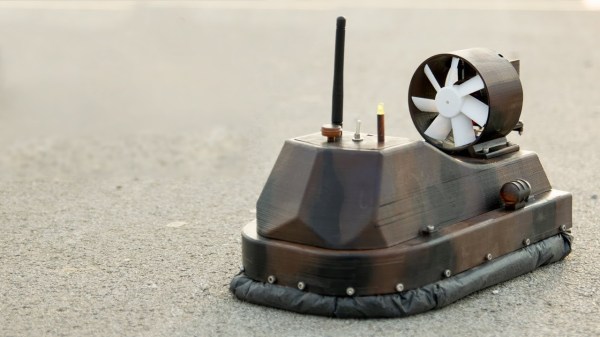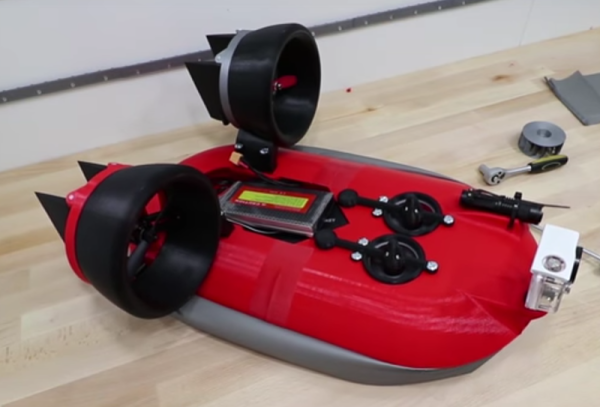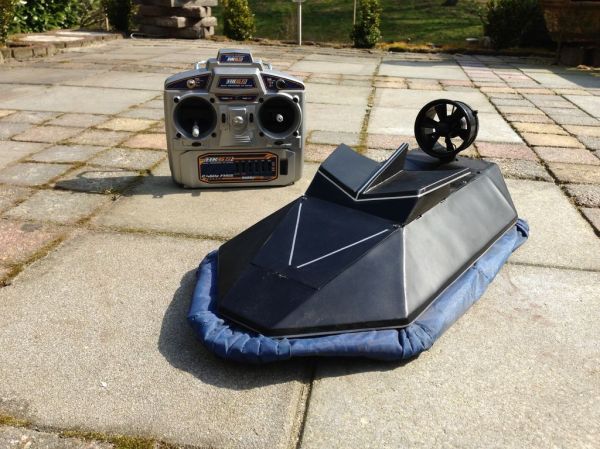The hovercraft is an entertaining but much maligned form of transport. While they have military applications and at times have even run as ferries across the English Channel, fundamental issues with steering and braking have prevented us all driving them to work on a regular basis. They do make great toys however, and [HowToMechatronics] has built an excellent example.
The build is primarily a 3D printed affair, with the hull, ducting, and even the propellers being made in this way. The craft is sized to be readily printable on a 30cm square build platform, making it accessible to most printer owners. Drive is via brushless motors, and control is achieved using their previously-featured self-built NRF24L01 radio control transmitter.
What stands out among most other hovercraft builds we see here is the functioning skirt. It’s constructed from a garbage bag, and held on to the hull with a 3D printed clamping ring. Most quick builds omit a skirt and make up for it with light weight and high power, so its nice to see one implemented here. We’d love to see how well the craft works on the water, though it holds up well on the concrete.
Finished in a camouflage paint scheme, the craft looks the part, and handles well too. We’d consider a small correction to the center of gravity, but it’s nothing a little ballast wouldn’t fix. Video after the break. Continue reading “A Garbage Bag Skirt Is Fit For A Hovercraft”



















